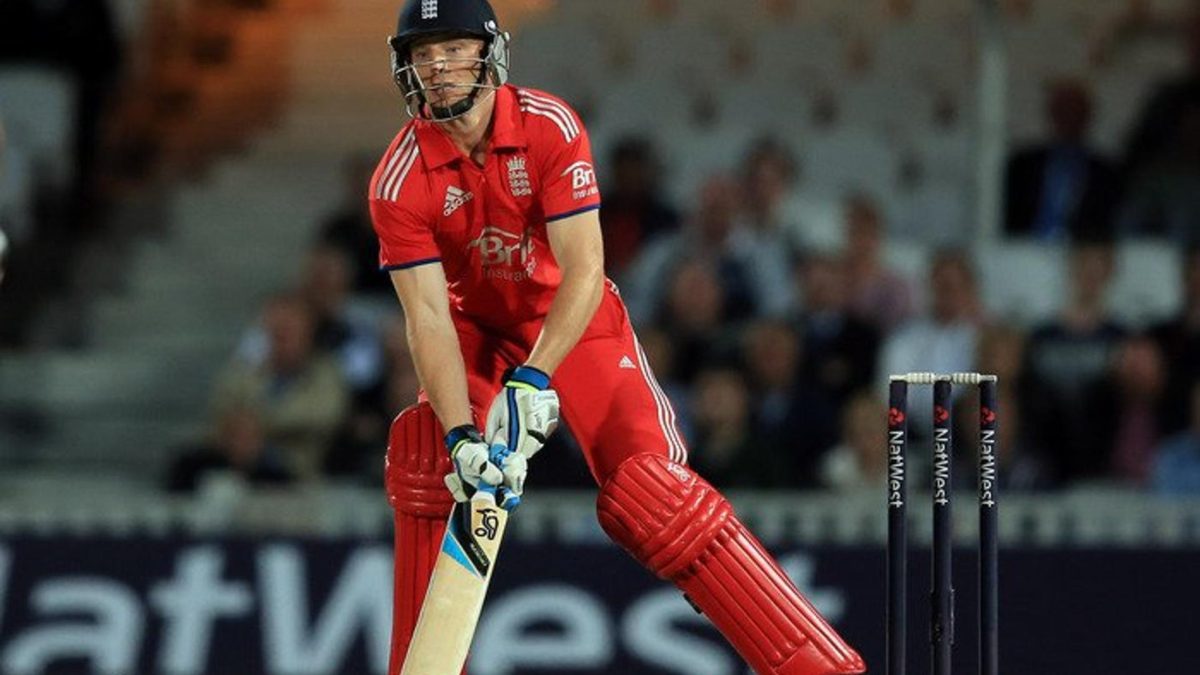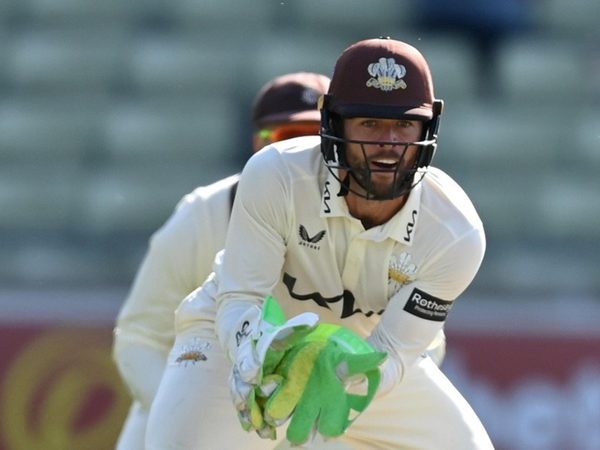
You’re the Jos: make a killing in the final overs
England’s finest exponent of death batting, Jos Buttler, gives his tips on maximising those final overs.
The main thing you’re looking for towards the end of the innings is what field the bowler’s got – whether you’re trying to hit him over his head, whether you’re trying to slice it through the off- side, go over mid-wicket… You’ve got to try and have a rough picture of where they’re going to try and bowl to you.
For example, you know generally if fine-leg is up in the circle for a quick bowler that it’s not going to be a short ball, which is going to give you the opportunity to play the scoop shot. Having a couple of options will really help you win the battle.
 Watch the ball! Don’t lift your head until after you’ve made contact
Watch the ball! Don’t lift your head until after you’ve made contact
HITTING STRAIGHT DOWN THE GROUND
Range Hitting
You wouldn’t expect to be able to smash a six on demand without practice. And with range hitting, it’s pretty simple. Use a normal wicket out on the square, set out a boundary, get someone to give you throws and just try and clear the boundary…
Start small… end BIG
Break it down into slower pieces. You can get someone to give you drop feeds (dropped on a driving length from a coach standing to your side), then underarm feeds. Just work on grooving that bat-swing.
Then you can progress it to a guy throwing overarm, then you can even try facing bowlers. That adds a good element of pressure for you and the bowlers.
It’s the same with anything: learn it slowly and then take it on to the next level, quicker and quicker. Can you still perform the shot as the skill gets more demanding?
Don’t try too hard
If you try and hit further and further, you might start swinging harder and harder. But stay a bit more relaxed, and you can get a really good swing. When you connect with a ball really sweetly it actually feels quite slow – it feels like you didn’t try and hit it very hard; it’s more of a controlled hit which actually goes the furthest. You rarely see a golfer over-swing, and yet you see how far they hit it. It’s the same in cricket. It means swinging about 80 per cent as hard as you can – especially if you’re going to be consistent.
 Dilshan has his own method for getting the ball behind
Dilshan has his own method for getting the ball behind
THE SCOOP
Jos’s insights on the over-the-shoulder shot
There are so many different techniques to paddle or scoop the ball – get in the nets and work out what works for you. You can either stay on two feet as I do, or go for the Dilshan method down on one knee. But the core principles would be watching the ball and trusting yourself.
Start practising
Any new shot you practice you’re going to risk getting hit. Build it up slowly from underarms to overarms, to the bowling machine, and progress it gradually. If you fear injury, doing it with tennis balls would be a good way to start. You can really build up your confidence, because you take away the fear of getting hurt. Move from tennis balls to underarms with cricket balls, overarms, maybe the bowling machine (where you know the ball is going to be full) – and then try it against a bowler in a net. Get it to a point where you’re comfortable and confident enough to play it in a game.
Commit to the shot
You have to premeditate it, 100 per cent. And you have to watch the ball for long enough. That’s the challenge.
One way of practising this is to say to yourself that you’re going to watch it bounce, see where it lands. That means that for a yorker, you’ll have watched it pretty much all the way on to your bat.
Or perhaps you can say you’ll wait for the sound of the ball hitting the ground before you take your head away. Because light travels faster than sound, if you’re still waiting for the sound before you take your head away you’ve probably watched it long enough to hit it.
Manipulating the field
A lot of one-day cricket is about manipulating the field. You see guys playing against spin, if they want to open up a gap at mid- wicket they might play a reverse sweep – the mid-wicket comes over to the off-side and then you’ve got a gap on the leg-side to clip twos into. At the end of an innings against a seamer it’s exactly the same. If you can stand there and hit him back over his head for six, he might then put his mid-off back, he has to bring somebody else up and it could be fine leg. And if you can’t play that shot then the bowler knows that’s quite a safe move, because he’s closed down your main area. Batting is about manipulating the field and having the two shots to allow you to do that and keep scoring.








